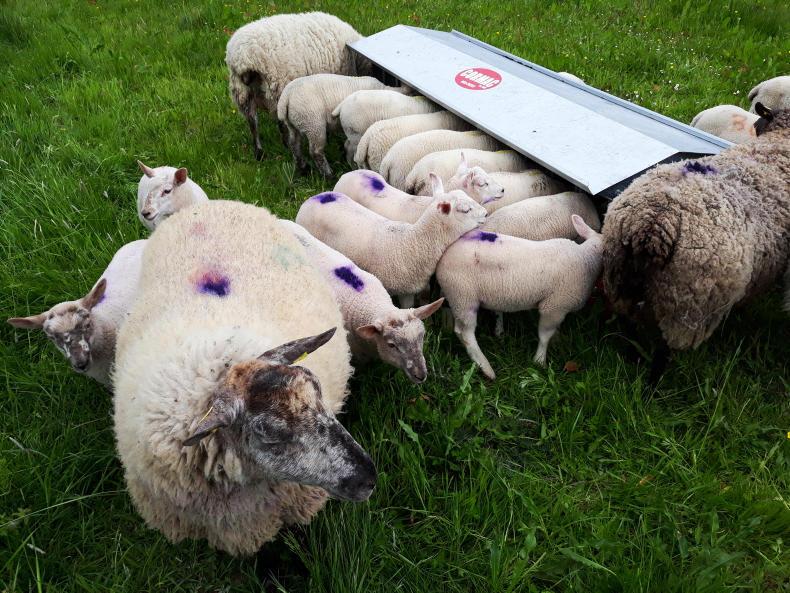Creep-feeding lambs
Some farmers were forced into creep-feeding due to the late spring in 2018 but achieved a good outcome where lambs were marketed before July, with prices covering additional costs. This is a vital aspect with concentrates costs increasing. Grass supplies are much better so far in 2019 so a decision on creep-feeding will come down to the farm’s preferred production system.
The research work undertaken in Teagasc Athenry shows creep-feeding has the potential to reduce age to slaughter by 40 days or more where feeding an average of 600g daily and by up to 28 days where feeding 300g. It is important to note that good grassland management can deliver significant benefits. Comparable levels of lamb performance can be achieved with lambs grazing a grass height of 6cm without creep supplementation and lambs grazing a grass height of 5cm and supplemented with 300g/day.
The volume of meal fed and farmgate lamb price at selling will obviously have a massive effect on margins. Farmers can plan to have lambs drafted earlier but have no direct control on price so therefore the area where they have the greatest control is on meal consumption. An intake of 600g daily will result in lambs on average consuming some 53kg concentrates. Taking a meal cost of €275/t and €320/t, for example, it will cost about €14.50/animal and €17/animal respectively to supplement lambs.
Feeding lambs ad-lib levels should be avoided as it can quickly accumulate to lambs consuming 50-100% more concentrates. While this will reduce the slaughter date further, it will greatly increase costs. Some farmers feed a portion of earlier-born lambs to reduce demand later in the season when grass supplies may be tighter (mixed-grazing systems). Others operate the optimum system of creep-grazing lambs and offering restricted levels of creep in troughs when grass supplies are tight. Feeding levels are hard to control in the absence of numerous creep feeders.
Ewes on their back
Many flocks lambing outdoors are reporting an increase in ewes in strong body condition going on their backs since weather has improved. Ewes on the point of lambing will survive on their back for a much shorter period given the pressure they are under. It is important to increase supervision levels. The best option, if housing is available, is to bring ewes at the greatest risk indoors. Placing some implements such as a trailer, transport box, roller, etc, in a field to give ewes an option to scratch their fleece has been shown to help.
Fluke treatment
Farmers who generally administer a fluke dose to ewes post-lambing are enquiring as to the need to do so with weather conditions improved. While the Department’s fluke forecast released earlier in the year pointed to a lower risk, it highlighted a continued threat on farms with a history of liver fluke issues. Treatment of outwintered ewes deemed to be at risk is recommended in April, while where ewes have been housed a number of weeks and haven’t received treatment, a strategic dose can be given to ensure a clean bill of health. Depending on the length of time housed, there may be potential to use a product that treats mature fluke (seven to eight weeks housed) only.






 This is a subscriber-only article
This is a subscriber-only article









SHARING OPTIONS: